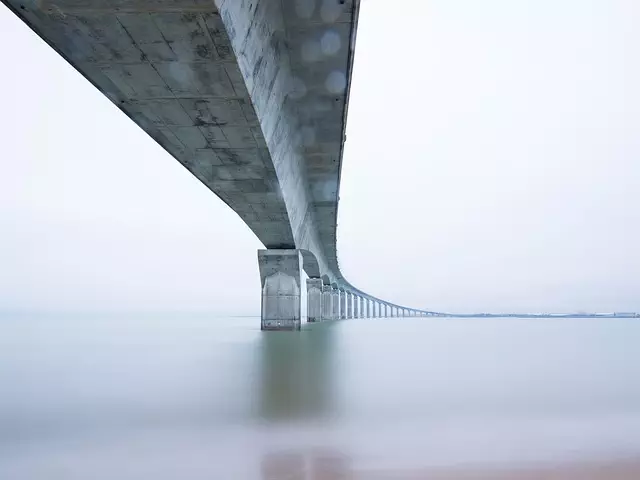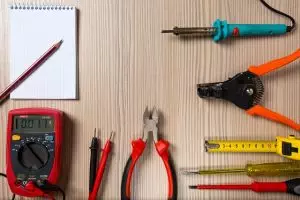Soil stabilization, a critical process for Foundation Repair Specialists, ensures structural integrity by addressing diverse soil types' challenges. By assessing soil strength, structure, and water content, specialists employ techniques like deep mixing or bio-based stabilizers to enhance bearing capacity and prevent settlement issues. This not only saves costs from structural damage but also guarantees building longevity. Modern methods offer cost-effective solutions worldwide, with applications ranging from historic city centers to rapidly developing suburbs. Foundation Repair Specialists prioritize eco-friendly approaches using materials like geotextiles and bio-based stabilizers for sustainable soil reinforcement while maintaining structural integrity. Early intervention through soil stabilization is recommended for property owners to prevent costly repairs and preserve property value. Future trends include the use of smart technologies and bio-based stabilizers for more economical, environmentally friendly foundation repair.
Soil stabilization is a cornerstone of sustainable construction, ensuring structural integrity and longevity. This cost-effective approach addresses common challenges faced by foundation repair specialists, from poorly compacted soils to expansive clays. By employing innovative techniques, such as soil reinforcement, chemical stabilizers, and geosynthetics, professionals can significantly improve soil quality at a fraction of traditional costs.
This article explores these solutions through case studies, highlighting successful projects and the crucial role foundation repair specialists play in implementing eco-friendly, long-lasting stabilization methods.
Understanding Soil Stabilization: The Foundation of Sustainable Structures

Soil stabilization is a critical process that ensures the long-term integrity and stability of structures built on diverse soil types. It’s a foundation for sustainable construction, especially in areas where soil conditions pose challenges. By understanding the intricate relationship between soil composition and structural support, foundation repair specialists can employ various techniques to enhance soil bearing capacity and reduce settlement issues.
This process involves assessing the existing soil’s strength, structure, and water content, followed by targeted interventions. These could range from adding stabilizers like cement or polymeric agents to improve soil cohesion to more advanced methods such as deep mixing or geosynthetics reinforcement. Effective stabilization not only saves costs associated with structural damage but also ensures the safety and longevity of buildings, bridges, and other infrastructure across different geographical locations.
Common Challenges in Soil Stabilization and Their Impact on Foundations

Soil stabilization is a critical process aimed at enhancing soil strength and stability, ensuring structures like buildings and bridges have solid foundations. However, this procedure isn’t without its challenges. One of the primary difficulties lies in identifying the root cause of unstable soils, which can vary from poor drainage to high water tables or even organic matter breakdown. Foundation Repair Specialists often face complex situations where a one-size-fits-all solution doesn’t exist.
Unaddressed soil stabilization issues can have severe consequences for foundations. Weak or unstable soils can lead to uneven settling, cracks in concrete, and misaligned structural elements. These problems not only compromise the integrity of buildings but also significantly impact their longevity and the overall stability of the surrounding infrastructure, emphasizing the importance of effective and targeted soil stabilization techniques.
Cost-Effective Solutions: Innovative Techniques for Soil Improvement

Soil stabilization is a critical aspect of construction and infrastructure development, but traditional methods can be expensive. Fortunately, innovative techniques have emerged, offering cost-effective solutions for foundation repair specialists and civil engineers. These modern approaches not only stabilize soils but also enhance their strength and load-bearing capacity without breaking the bank.
One such technique involves the use of bio-based additives, which are derived from natural sources like plant fibers and microbes. These eco-friendly materials can improve soil structure, increase bearing capacity, and reduce settlement. Another game-changer is chemical stabilization, where specific chemicals are introduced to modify soil properties. This method enhances soil strength and durability, making it ideal for various construction projects, especially in areas with challenging geological conditions.
Case Studies: Success Stories in Soil Stabilization Projects

Soil stabilization projects have seen remarkable success stories across various locations, showcasing effective and cost-efficient solutions for Foundation Repair Specialists. One notable case involves a historic city center where severe soil erosion threatened iconic buildings. Experts implemented a specialized geogrid reinforcement system, which not only stabilized the unstable soil but also preserved the architectural integrity of the area. This project exemplifies how innovative techniques can transform challenging sites into thriving urban spaces.
Another successful instance occurred in a rapidly developing suburban area experiencing settlement issues due to weak soil conditions. Local Foundation Repair Specialists collaborated to enhance the soil’s bearing capacity by incorporating cost-effective, environmentally friendly materials. The result was a stable foundation for new constructions, ensuring the longevity of infrastructure and residential properties. These real-world applications highlight the versatility and benefits of modern soil stabilization methods, inspiring further exploration and adoption by industry professionals.
The Role of Foundation Repair Specialists in Soil Stabilization

Foundation repair specialists play a crucial role in soil stabilization, particularly in areas prone to unstable ground conditions. These experts possess specialized knowledge and tools to assess and address various soil-related issues that can compromise building structures. By implementing cost-effective strategies, they enhance the long-term stability of foundations, ensuring the structural integrity of properties.
Their involvement often begins with a thorough inspection, identifying weak spots and potential hazards. They then employ techniques such as deep foundation stabilization, soil reinforcement, or geotechnical solutions tailored to the specific challenges of the site. These methods not only strengthen the existing soil but also mitigate risks associated with settlement, shifting, or erosion, ultimately saving costs in the long run by preventing costly repairs or structural failures.
Environmental Considerations in Choosing Cost-Effective Methods

When opting for cost-effective soil stabilization methods, environmental considerations are paramount. Foundation repair specialists often recommend eco-friendly solutions to minimize ecological impact while achieving structural integrity. Using environmentally friendly materials and techniques can prevent pollution, conserve natural resources, and reduce energy consumption associated with traditional stabilization methods. For instance, geotextiles and bio-based stabilizers are gaining popularity due to their effectiveness in reinforcing soils without causing environmental harm.
Moreover, these sustainable approaches often lead to longer-lasting results, reducing the need for frequent repairs and maintenance. By considering the ecological footprint of soil stabilization, businesses and homeowners can contribute to a more sustainable future while ensuring the structural integrity of their properties. This dual benefit makes cost-effective methods an attractive choice for those seeking reliable foundation repair solutions.
Long-Term Benefits and Return on Investment (ROI) Analysis

Soil stabilization is a wise investment for any property owner, offering long-term benefits that far outweigh initial costs. By addressing soil issues early, homeowners can avoid costly foundation repairs in the future. Foundation Repair Specialists often recommend stabilization as a preventive measure, which can save significant time and money over the lifespan of a home.
A robust ROI analysis demonstrates that stabilized soil reduces the risk of structural damage, preventing expensive renovations or replacements. This method is especially beneficial for older homes or those built on unstable terrain. By investing in soil stabilization, property owners can enhance their home’s structural integrity, ensuring its value remains high and avoiding unexpected repair expenses.
Best Practices and Future Trends in Cost-Effective Soil Stabilization

The best practices in cost-effective soil stabilization involve a combination of advanced technologies and traditional methods. One such practice is using geosynthetics, such as geo-textiles and geomembranes, to reinforce soils and prevent erosion. These materials are particularly useful in areas prone to high water tables or heavy traffic loads, offering a durable and economical solution. Foundation repair specialists often recommend deep soil mixing, which involves blending in stabilizers like cement or lime with native soil to create a stronger, more compact structure. This method is especially effective for repairing sloped terrain and preventing landslides.
Looking ahead, future trends in cost-effective soil stabilization are driven by the need for sustainability and innovation. There’s a growing interest in bio-based stabilizers, such as biosolids and bio-remedial agents, which not only enhance soil stability but also promote environmental friendliness. Additionally, the integration of smart technologies like sensors and drones is expected to optimize monitoring and management of stabilized soils. These advancements promise to make foundation repair more efficient and cost-effective while minimizing ecological impact, benefitting both construction projects and the environment.
